What is string art?
To have an idea of the string art technique, you should understand its main principle: a solid surface is always chosen as a base, into which nails are driven, and threads are stretched between them in a certain way. The result is a three-dimensional picture, as if shaded with color, combining brutality and airiness.
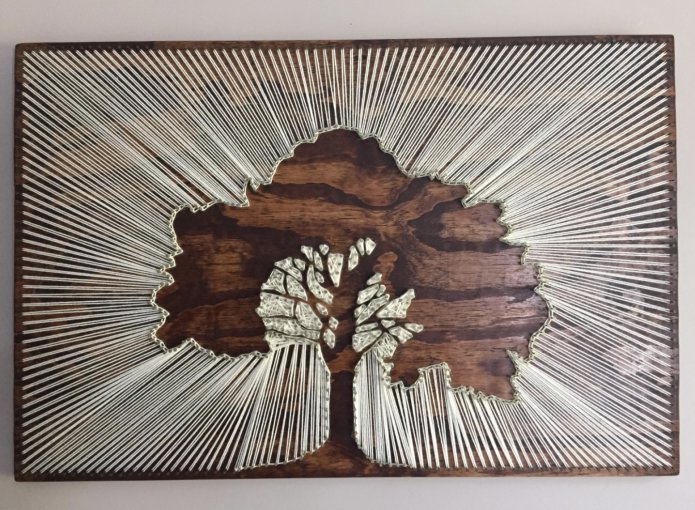

Panel “Heart”
First, we will tell you about the simplest way to create a panel for beginners. You can make such a craft together with your child: he will really enjoy pulling the threads, because the result is guaranteed to be a picturesque picture.
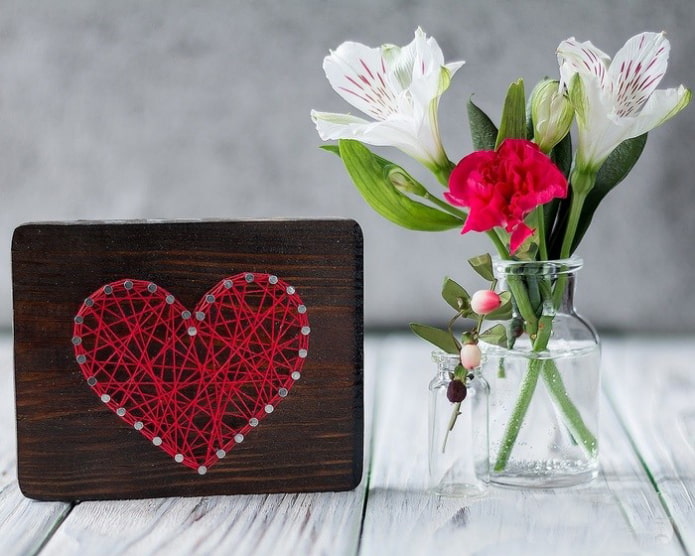
To make a panel with your own hands, we will need the following tools:
- Wooden base for the future picture: a board made of soft wood, plywood, cork or saw cut. A bamboo board will not work – nails go into it too hard. If you take foam plastic as a base, then a hammer is not needed, but the thread tension should be weak.
- Yarn. Mouline thread, twine or knitting thread will do: they should be strong, since a single break can ruin the whole craft.
- Paper and pencil.
- A lot of small nails. Their length depends on the thickness of the base.
- Hammer.
- Pliers.
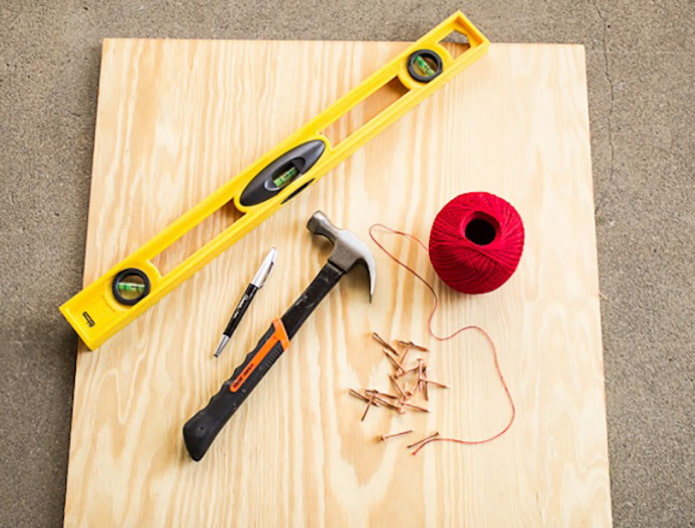
Step-by-step instructions
Start creating a simple picture with a preliminary diagram:
- Cut out a heart (or any other geometric shape) from paper. If the wooden board has roughness or defects, it should be treated with sandpaper. Apply the stencil to the smooth surface of the base. If necessary, stick the template to the board using double-sided tape. Trace the heart with a simple thin pencil.
- Draw dots along the line at an equal distance.
- Hammer in the nails.
- It is best to hold the nails with pliers: this way you will not hurt your fingers, and the nails will be hammered in at the same height.
- When the frame is ready, secure the end of the thread to one of the nails and begin to pull the threads through the other nails. We make sure that the heart is shaded evenly and that the threads are always taut.
- When the work is finished, carefully secure the end of the thread.
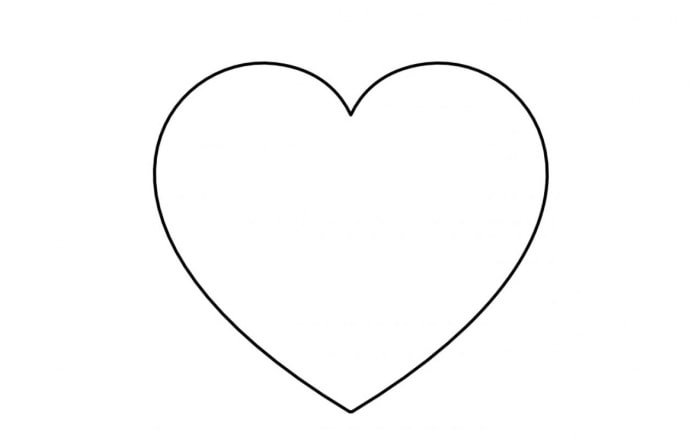
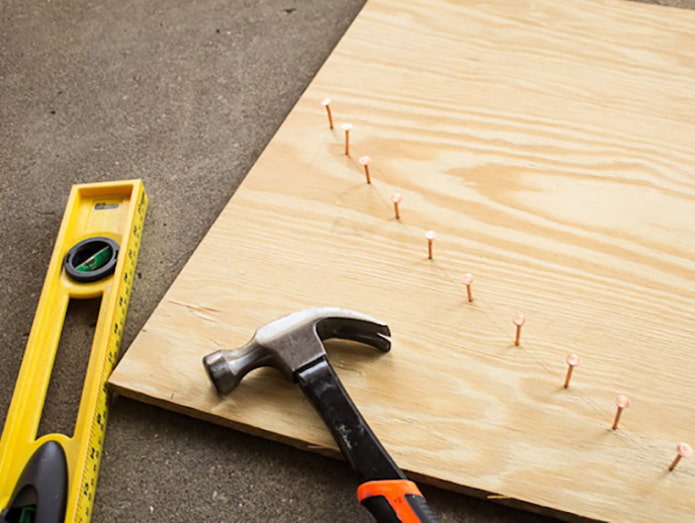
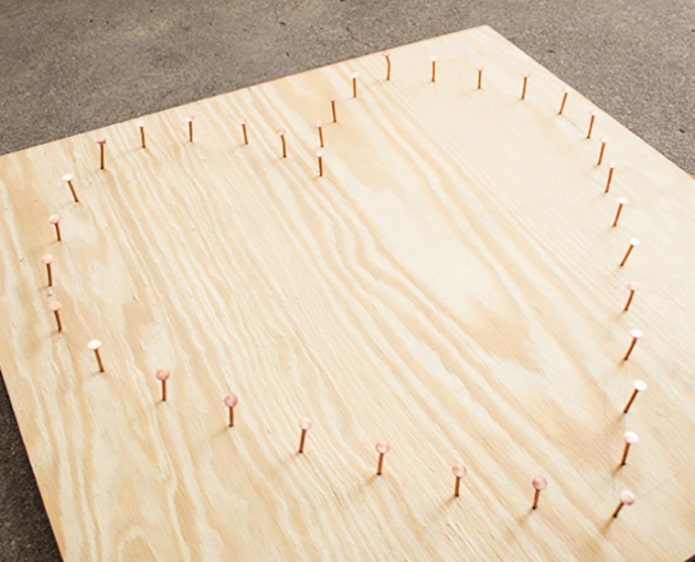
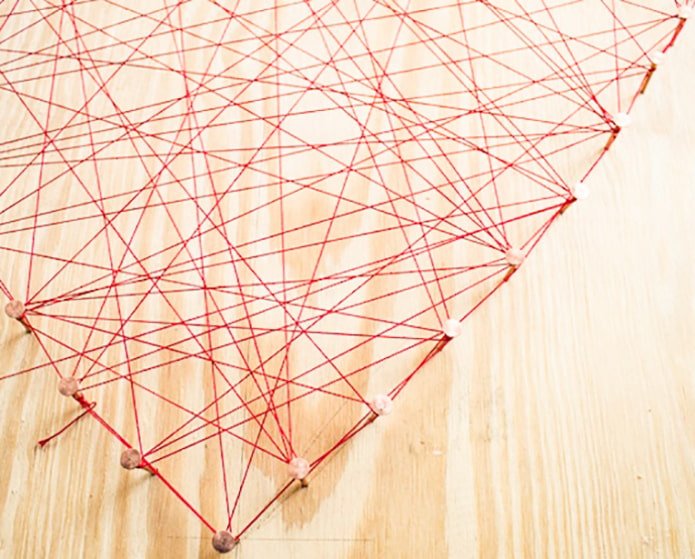
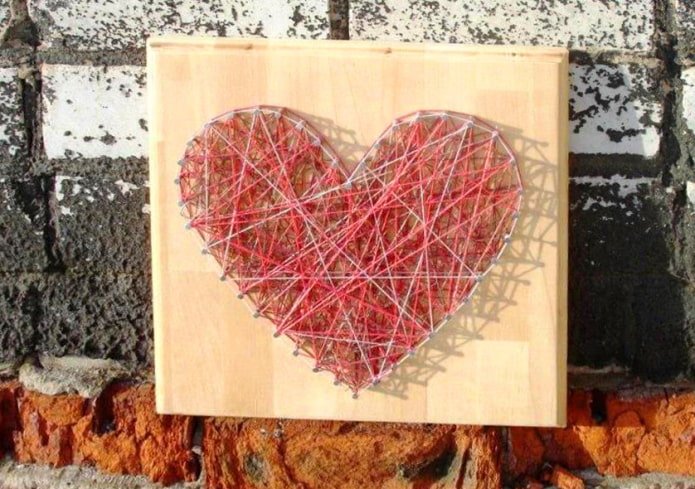
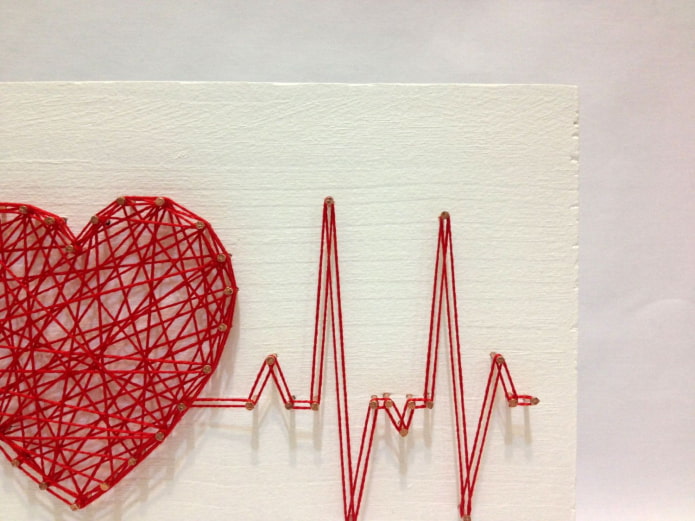
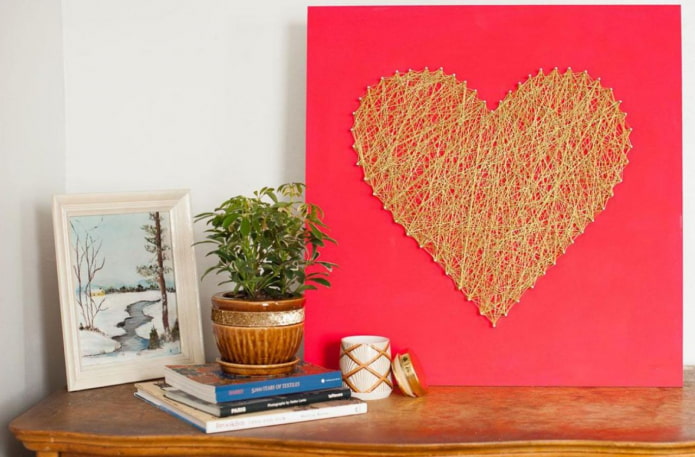
The photo shows a finished panel that will decorate any interior. The base can be protected with varnish, stain or covered with acrylic paint.
Picture in the form of a deer head
After watching this video, you will be able to make a picture with one of the most popular images today. Posters and deer figurines are especially appreciated in interiors designed in the Scandinavian style. In the process of creation, plywood, black fabric fixed with a furniture stapler, nails and contrasting white threads were used. The finished craft looks very impressive.
To create graphic pictures in the form of a deer, wolf or cat, you can use the following templates:
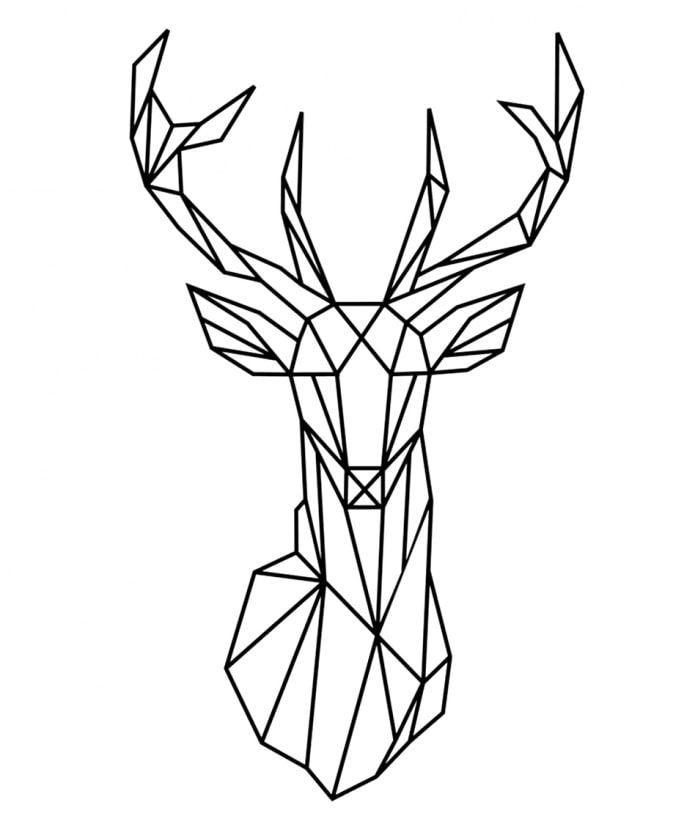
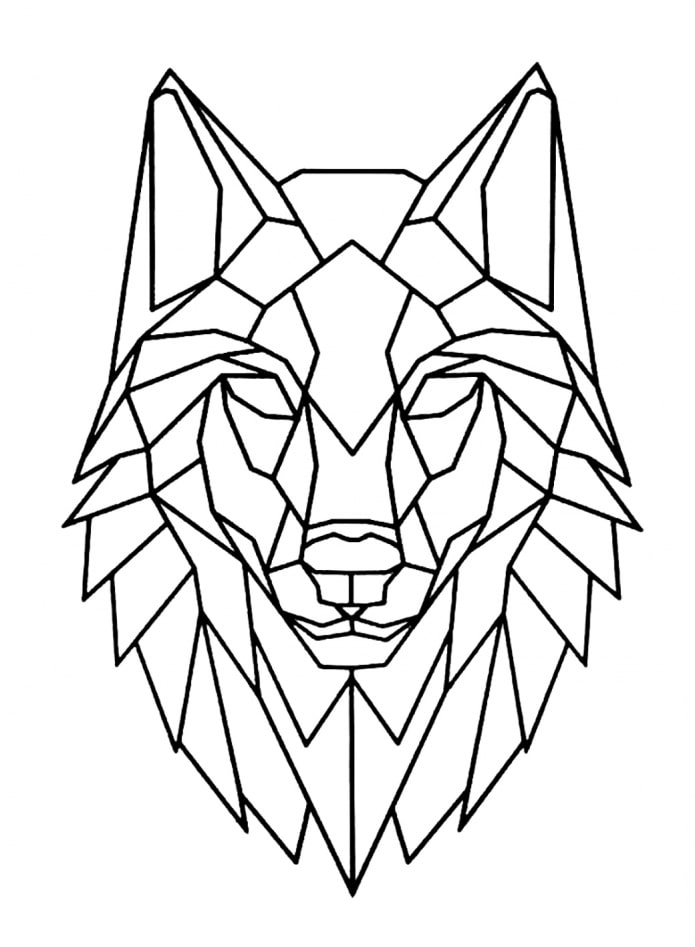
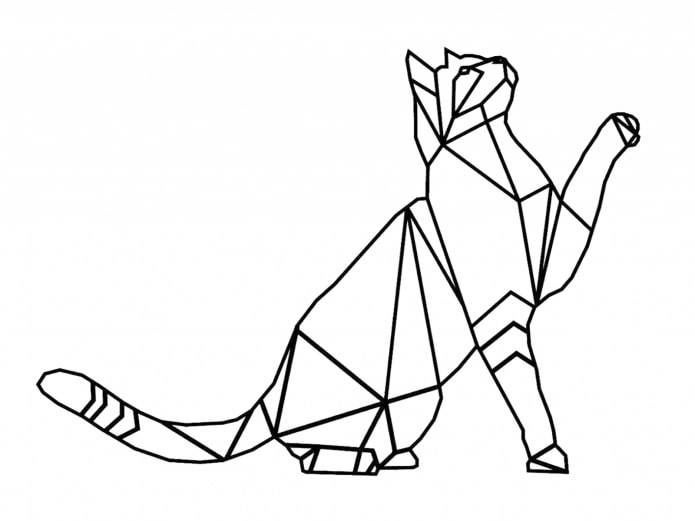
Panel with an inscription
Having mastered simple figures, you can move on to more complex compositions. From already familiar materials, you can create any inscription that will look stylish and interesting.
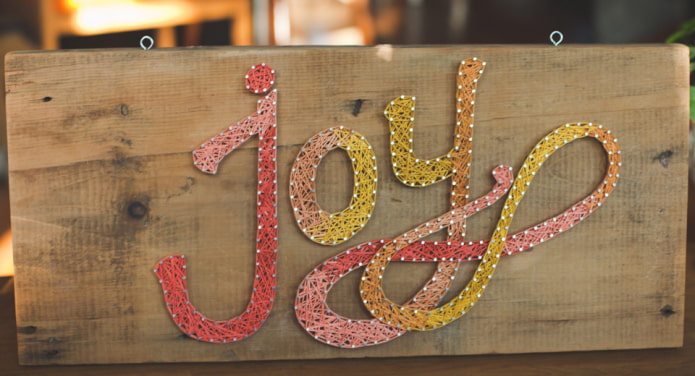
The photo shows a street art painting with the inscription “Joy” in English.
Tools and materials
To create the inscription you will need:
- Board.
- Strong multi-colored threads.
- Small nails of the same size.
- Hammer.
- Pliers.
- Sketch with the inscription.
- Double-sided tape.
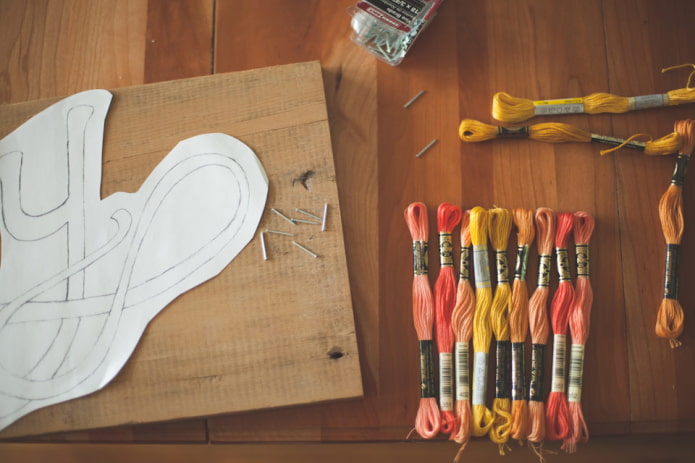
Step-by-Step Instructions
- Let’s get to work. You can draw the inscription by hand or find a suitable template and print it out. Cut out the paper stencil, stepping back from the outline of the drawing. Glue the paper to the board with double-sided tape.
- Hammer the nails in carefully, at an equal distance from each other. 5–9 mm should remain on the surface. It is advisable to use pliers or tongs. Remove the template. Carefully remove the pieces of paper remaining on the base with tweezers.
- Tighten the threads so that the nails do not bend, but do not allow the drawing to “sag”.
-
To change the color, tie the end of the old thread in a knot and cover it with glue. Start the new color with a strong knot, fix it with glue and continue winding the threads. Cut off the ends and glue them. The inscription is ready.
- To complete the composition, many craftsmen make an edging. It can be contrasting or in the color of the inscription. For this, the nails are braided in a “snake”. Sometimes the outline is made from a denser and thicker thread, decoratively outlining the letters:
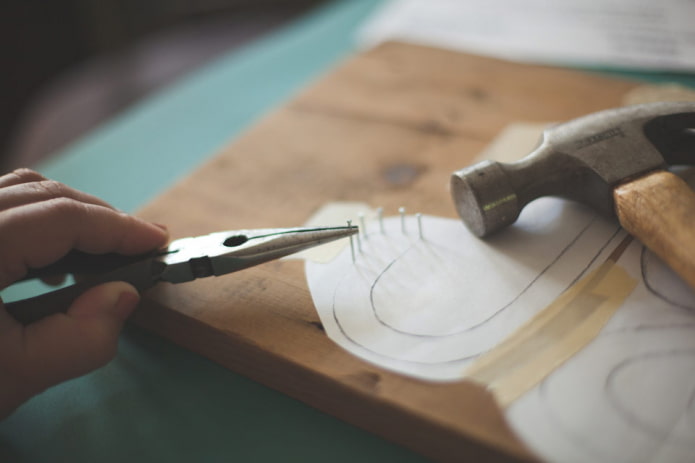
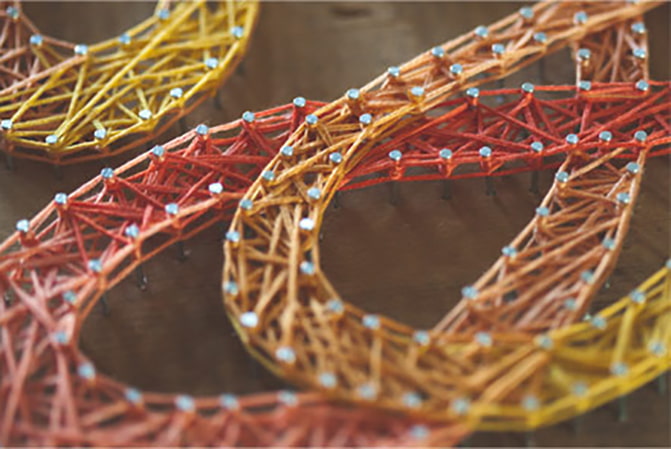
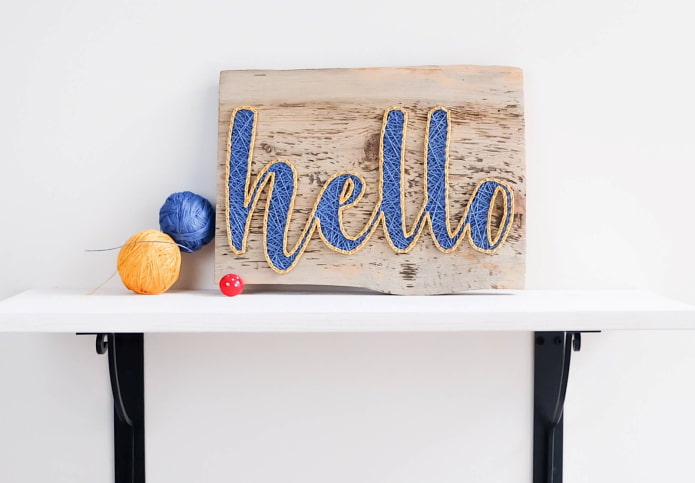
A child’s name made of threads can serve as a separate decoration for the interior of a child’s room. You can also add an inscription to a more complex composition in the form of a key holder or clothes hanger.
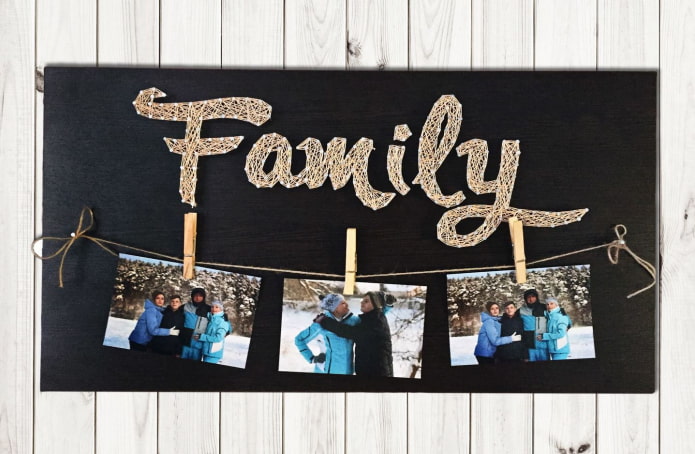
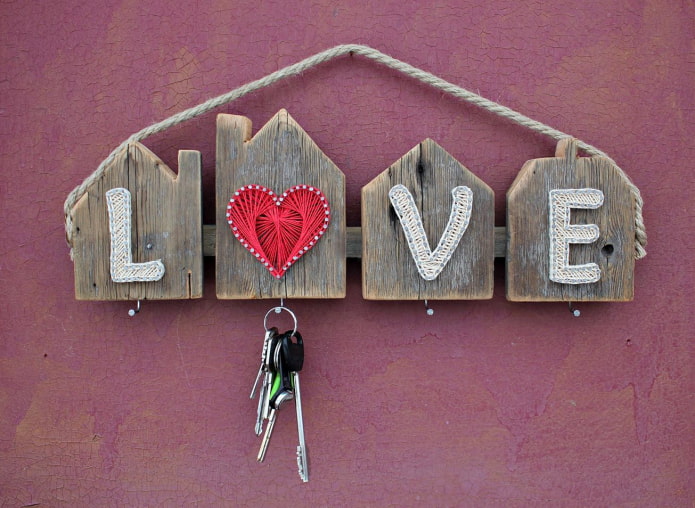
The photo shows a key holder created with my own hands using several techniques. Each element is assembled on its own base. Nails serve as hooks for keys.
String art craft in mixed media
Another original panel made of nails and threads, made with your own hands. To make it, you need a board, paint, artificial flowers and a battery-powered garland.
To make the panel, you can use picturesque wood cuts:
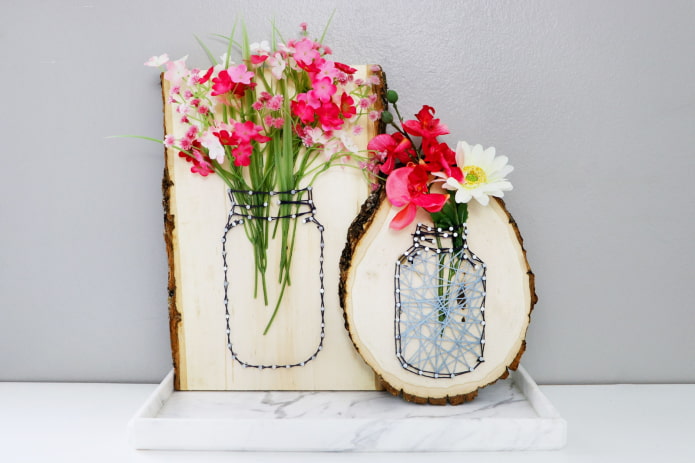
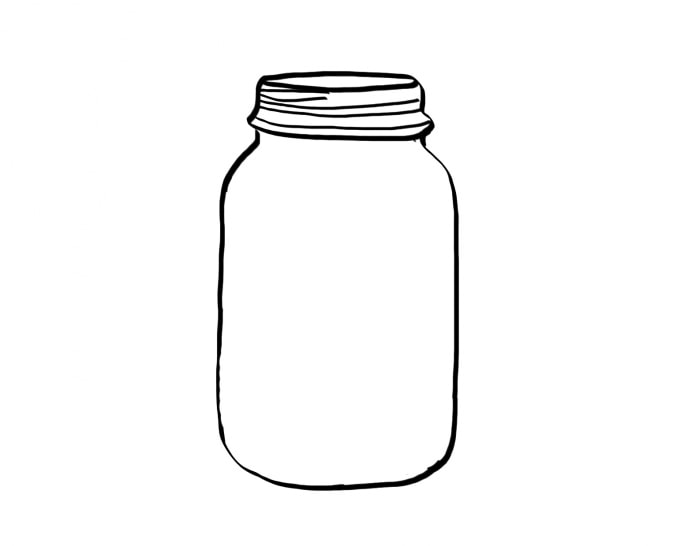
Multicolored panel
To weave animals that will look great in a child’s room, you will need threads of several shades.
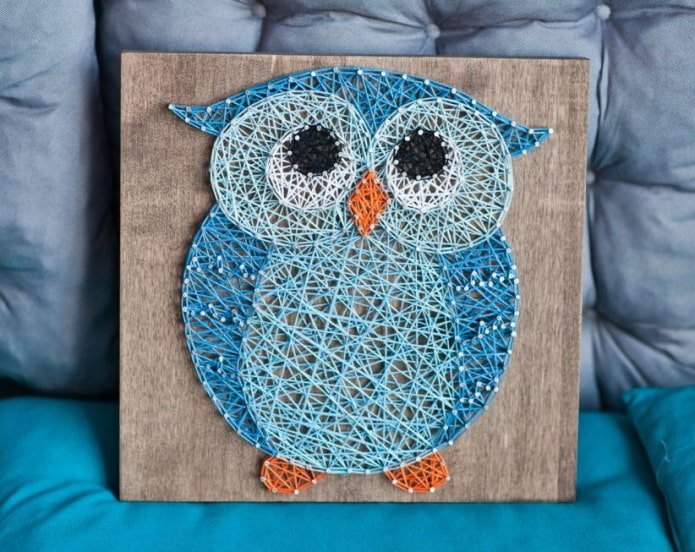
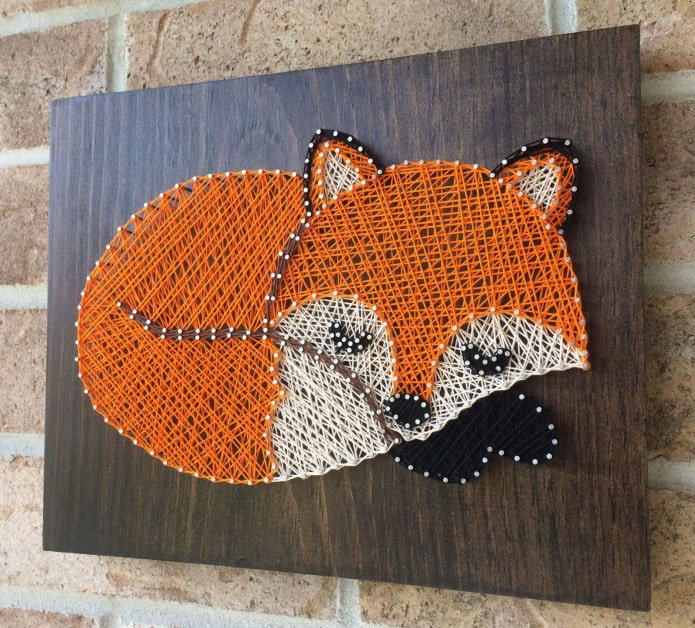
Tools and materials
The same kit for making:
- Wooden base.
- Any paper template with animals.
- Carnations.
- Hammer.
- Multicolored threads.
- Pliers.
- Scissors.
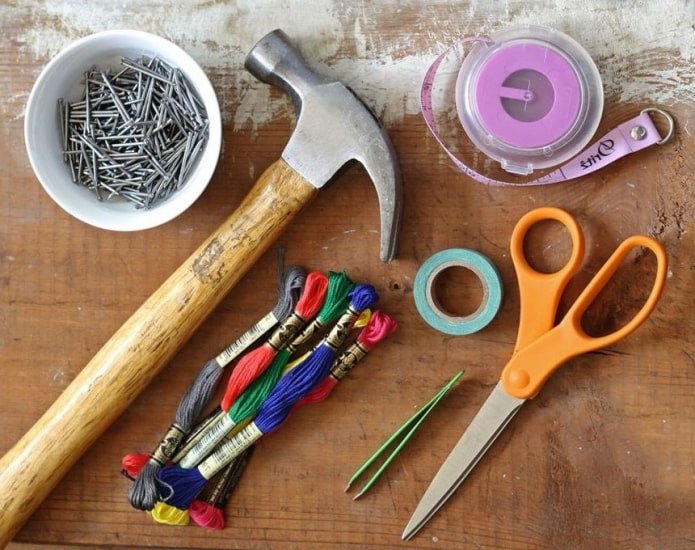
Recommendations
You can use the pictures below as an example, or find examples on the Internet yourself.
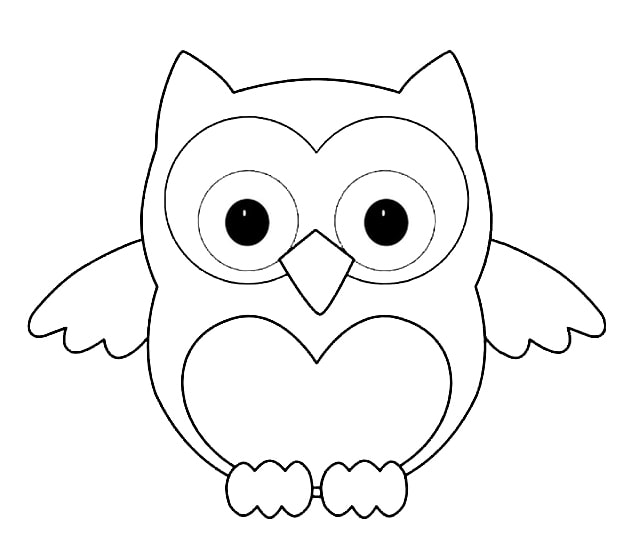
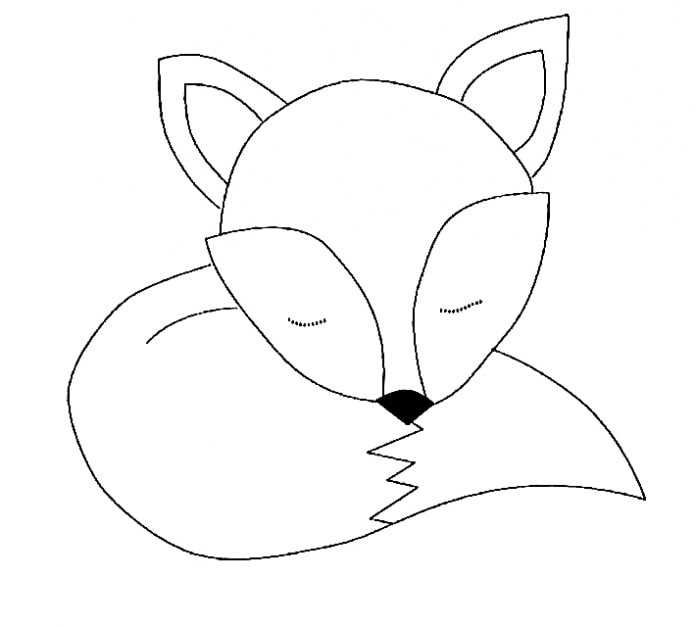
- Print out the template of the required size and apply it to the board.
- Hammer in the nails at equal distances from each other.
- To save time, you can use a part from a regular stationery pen when weaving. To do this, thread the thread through the tube. The thin end of the pen allows the thread to pass even through tightly set nails – this helps when “shading” the smallest elements of the drawing.
- To create an owl, you will need threads of five colors: blue, light blue, white, orange and black. We recommend winding the threads in a certain sequence. First, paint the head and wings with blue threads. Then change the color to light blue and move on to the abdomen and areas around the eyes. The next step is black and white eyes. Lastly, wind the beak and paws.
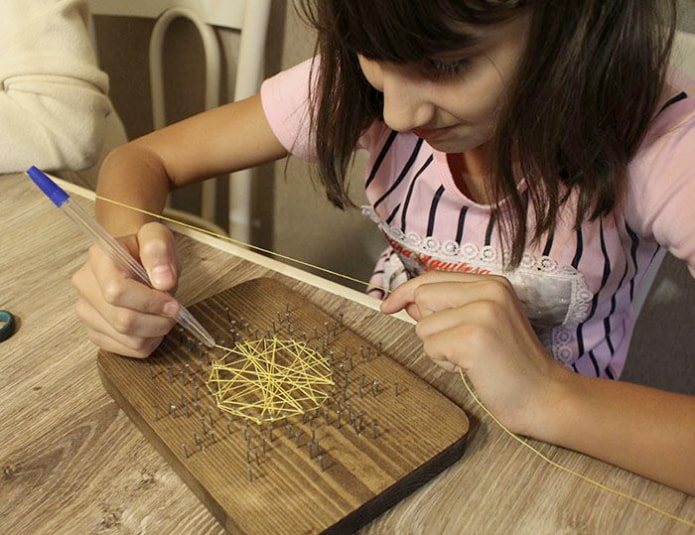
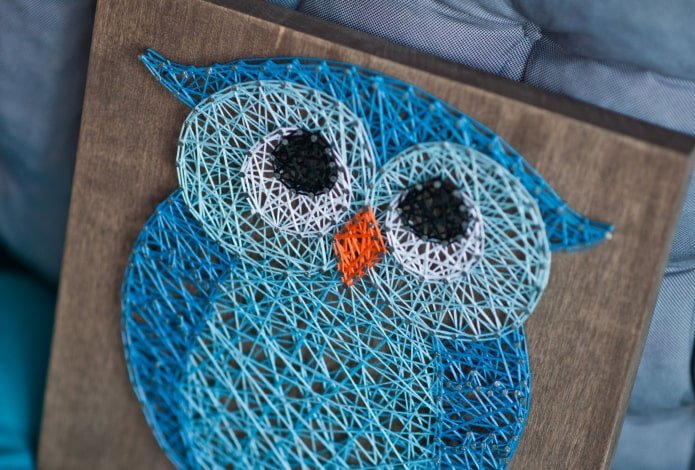
To create multi-layered pictures from threads, you need to prepare longer nails. This example clearly shows that you need to fill the bottom layer first, then the top layer:
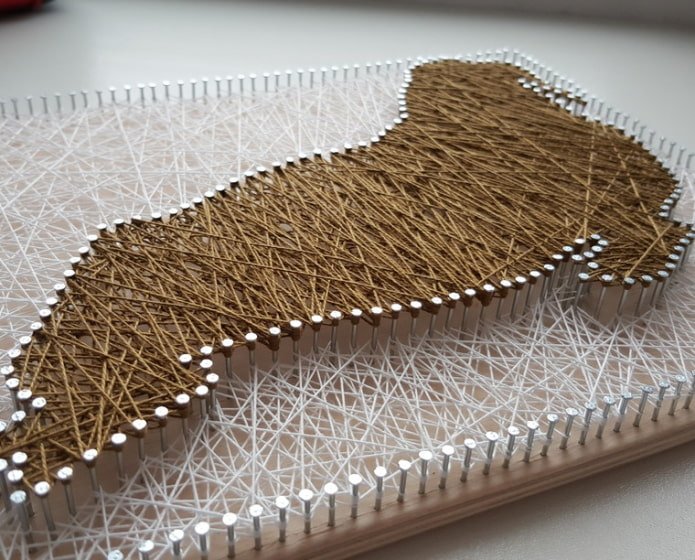
Another idea for a multi-layer three-color panel:
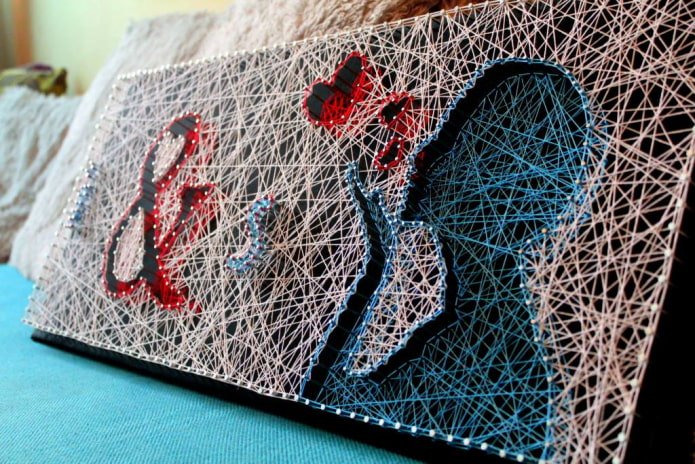
Having honed their skills, professionals create real masterpieces:
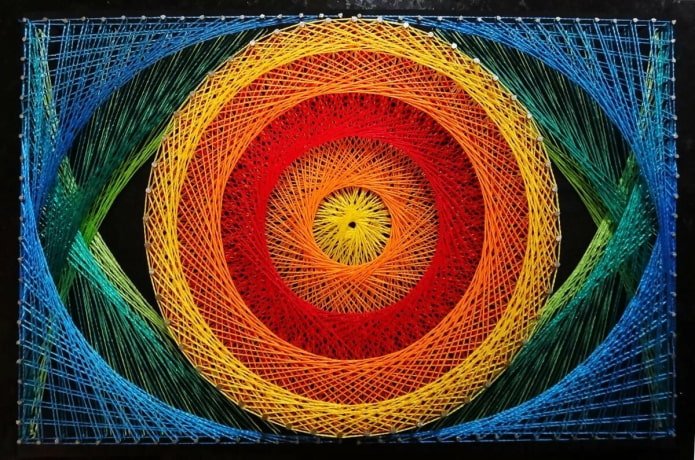
The photo shows an impressive composition in the string art technique. Here, the winding of threads does not occur chaotically, but according to a certain pattern.
Here are several popular patterns for creating panels from nails and threads – they are used to draw symmetrical patterns:
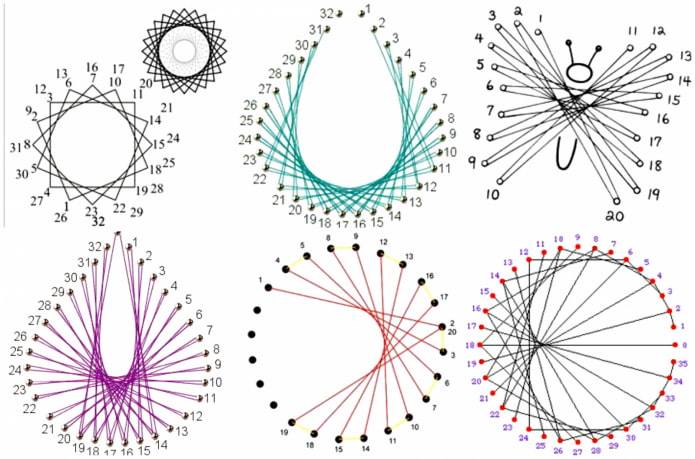
Balloon painting
The finished piece in the string art technique will be a great gift. This master class describes how to create a painting in the form of a multi-colored hot air balloon:
When you are finished, paint the nail heads in the color of the threads along the outline of the drawing – then the craft will look neater.
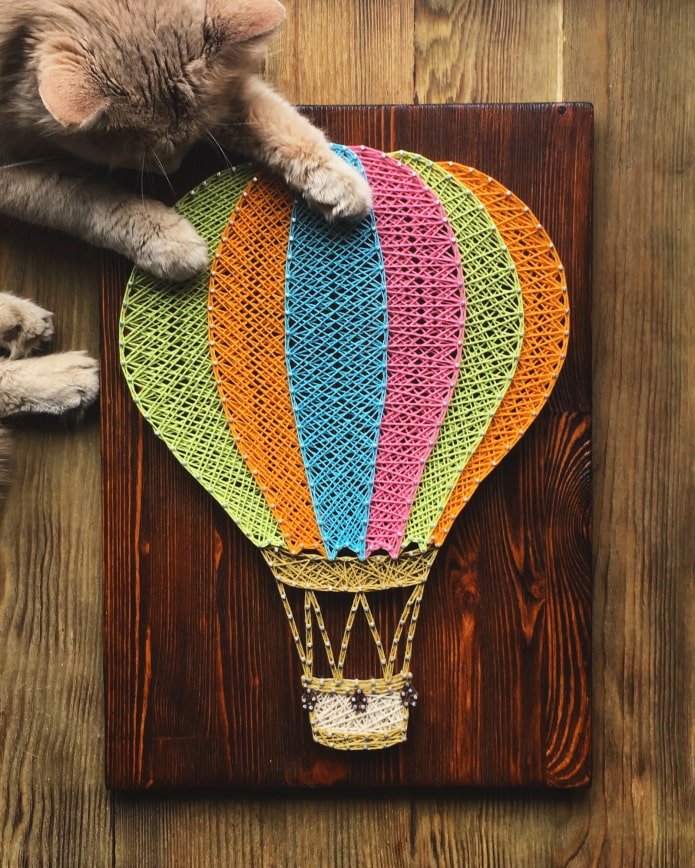
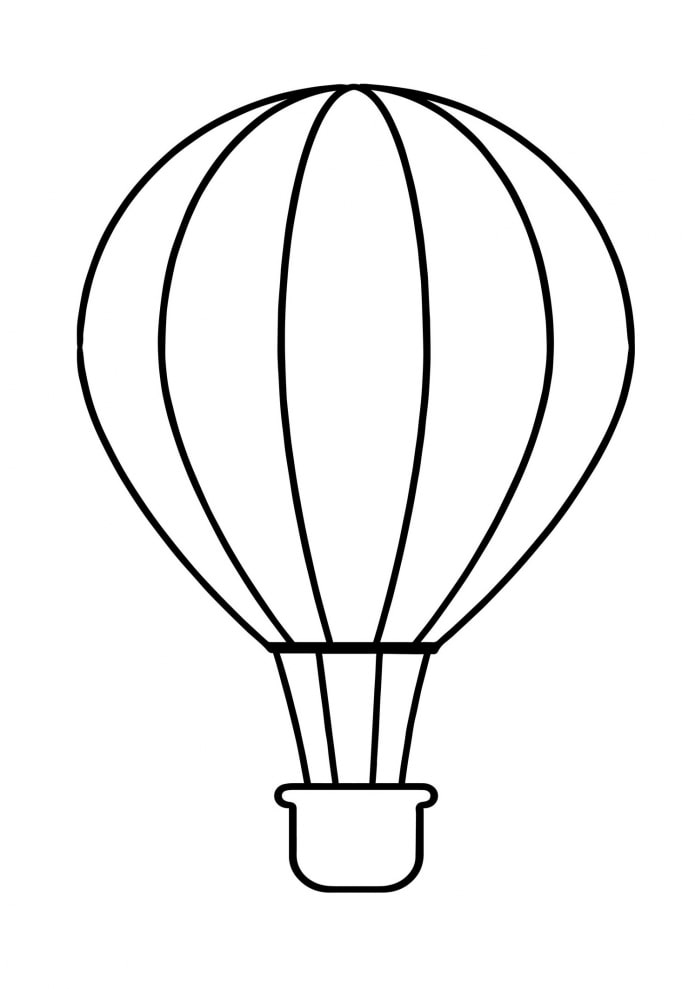
Silhouette painting with background filling
We tell you how to make a panel where the center of the composition remains empty. This craft looks even more impressive.
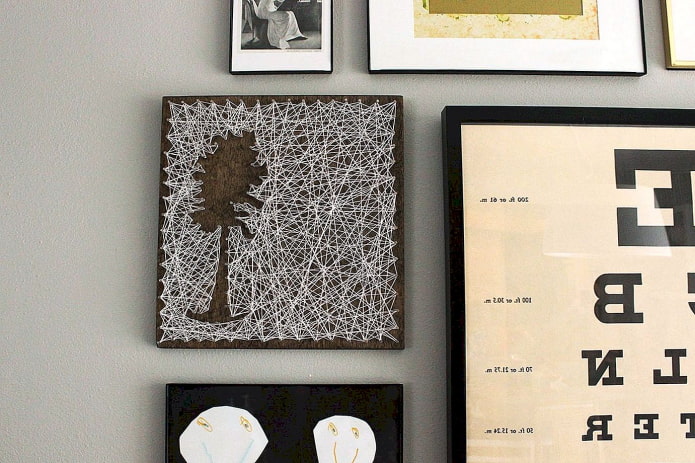
To create a painting in eco-style you will need:
- A board with a rough wood texture.
- Contrasting threads.
- Nails.
- A hammer.
- Paper and pencil.
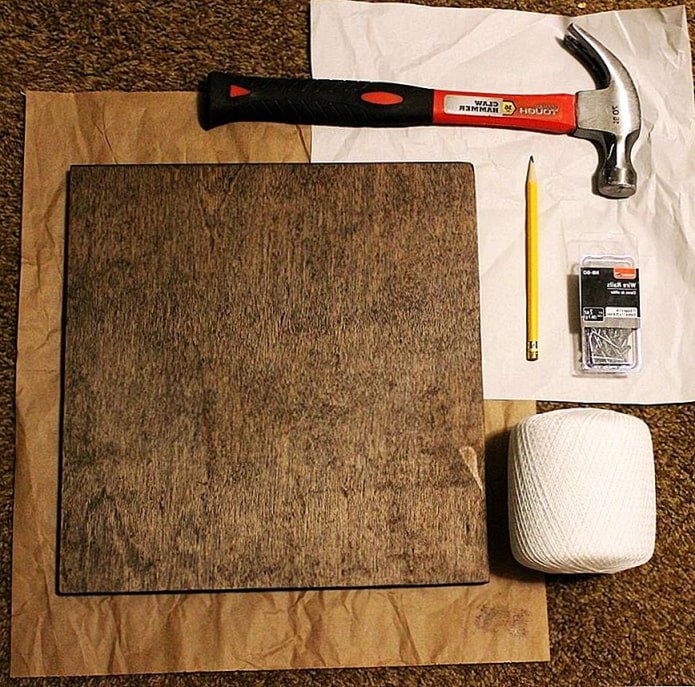
Step-by-step instructions
Let’s start creating the panel:
- Draw the tree silhouette you like on paper.
- Hang the nails, using the pencil drawing as a guide.
- Hang the nails around the perimeter of the board, leaving the same distance from the edge:
- This is what the intermediate result looks like:
- Secure the knot on one of the nails, cutting off the tail of the thread:
- Win the threads, moving to the outer nails along the edge of the board, thereby filling the background:
- Take out the paper:
- Make sure the background is filled evenly:
- When the gaps are shaded, the work can be finished. We tie the end of the thread and fix it with glue:
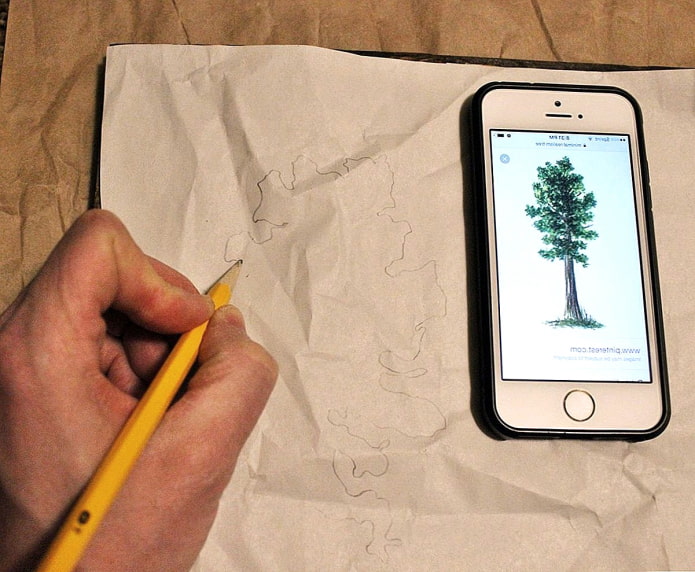
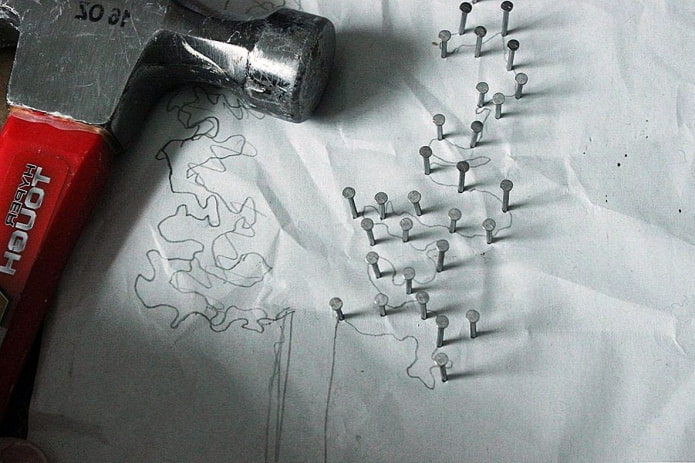
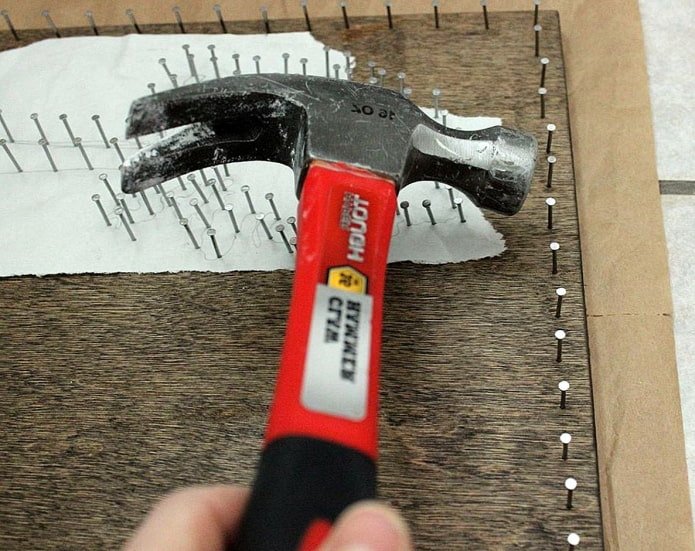
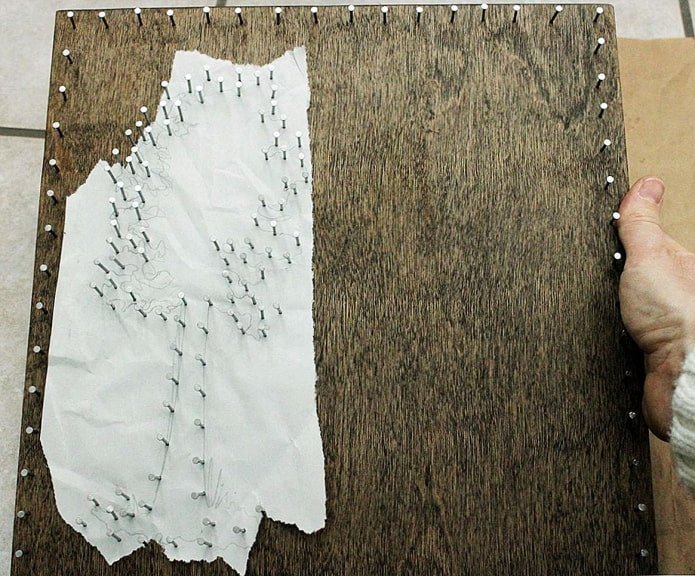
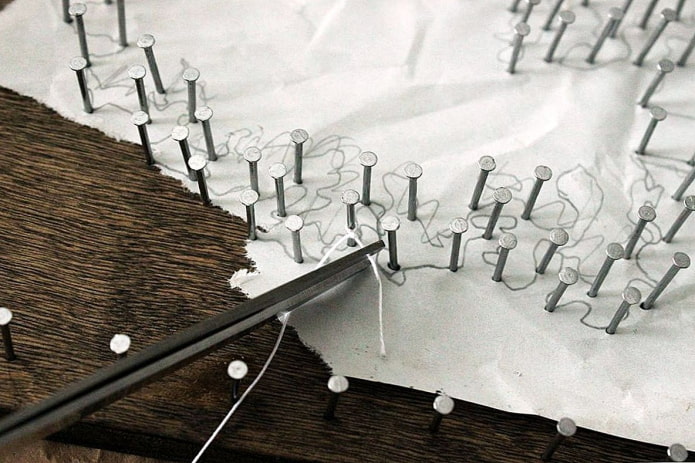

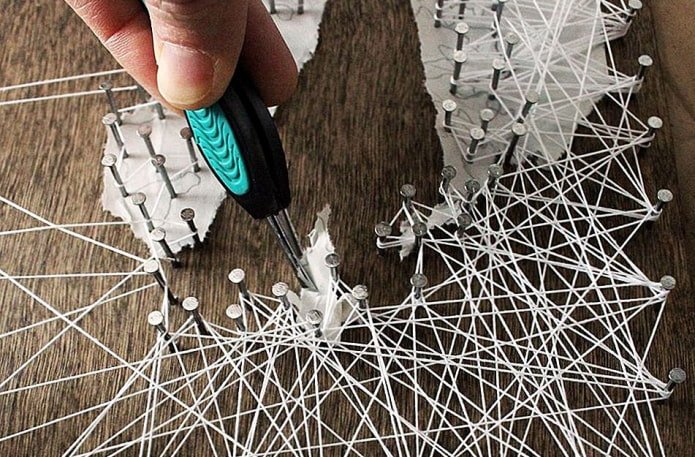
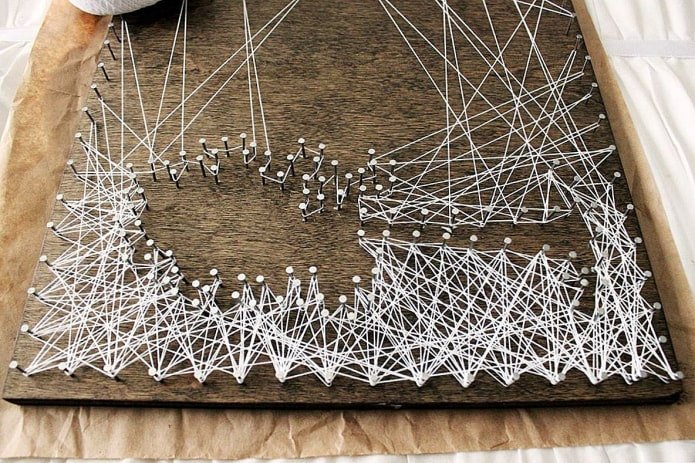
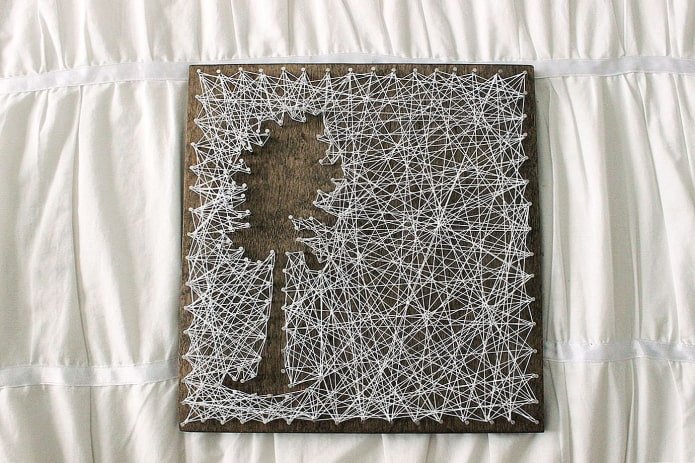
To create a picture, you can choose any silhouette you like:
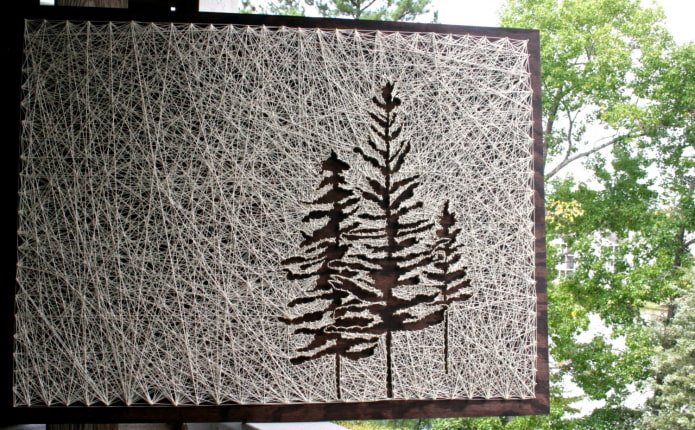
The photo shows a composition with the image of fir trees. This work is more delicate, so the author used the smallest nails. Unlike the picture from the master class, the threads are also stretched along the perimeter of the board, braiding a square outline. This work looks more complete.
The string art panels can be supplemented with decorative elements: beads, ropes, leather straps:
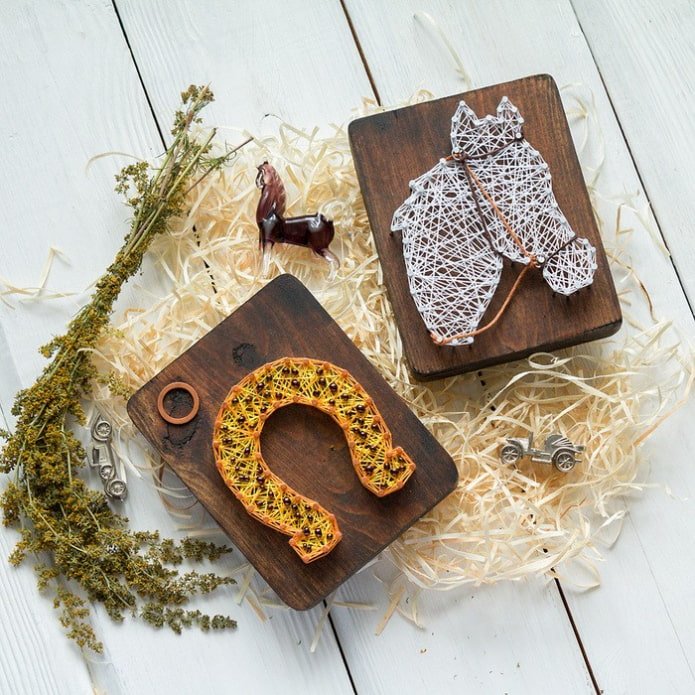
Selection of patterns
If you have already tried the above-mentioned master classes and you want something more, then below I will show a selection of patterns. You can print them out or get inspired by these templates and draw your own.
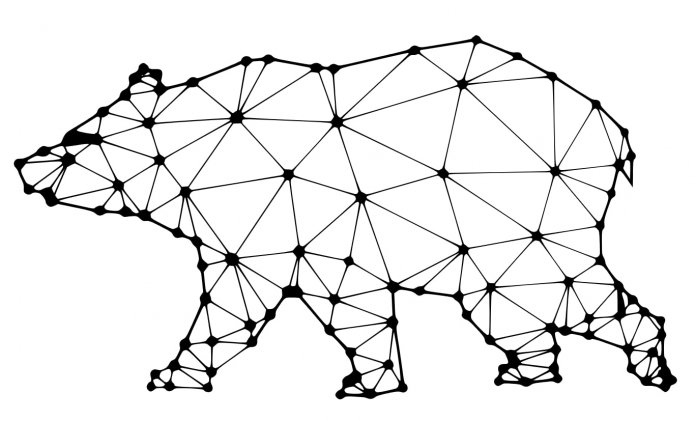
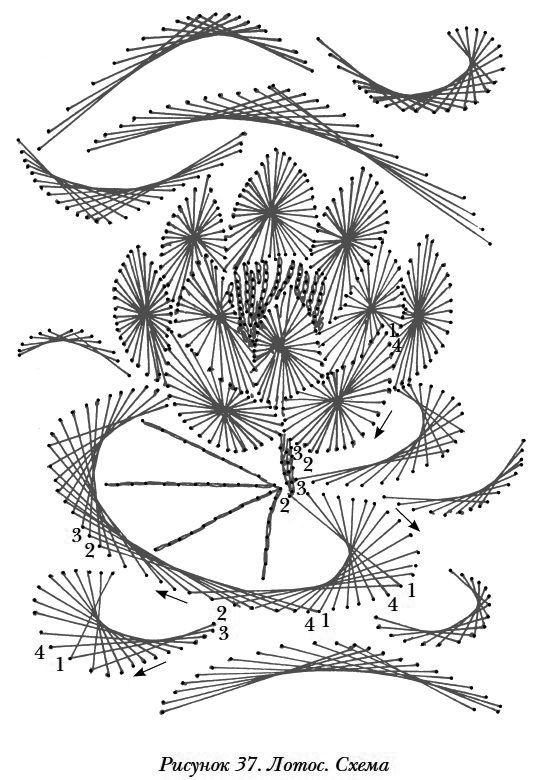
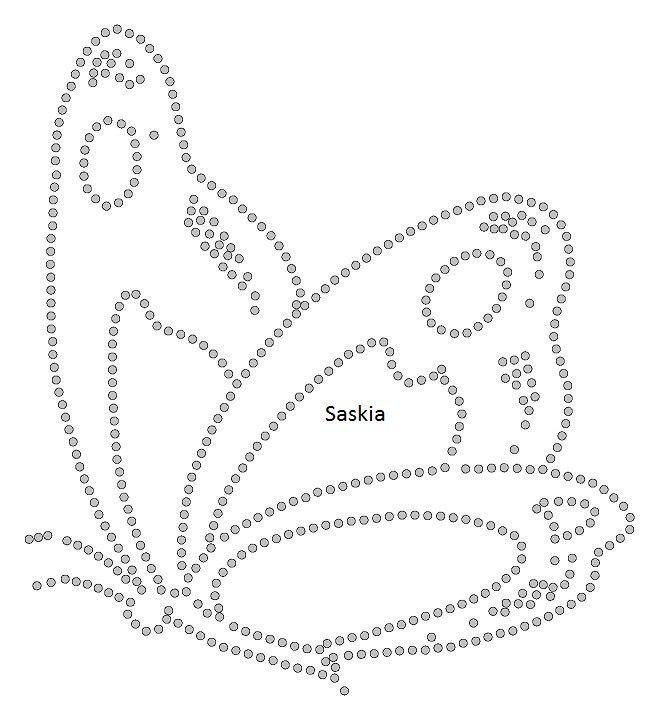
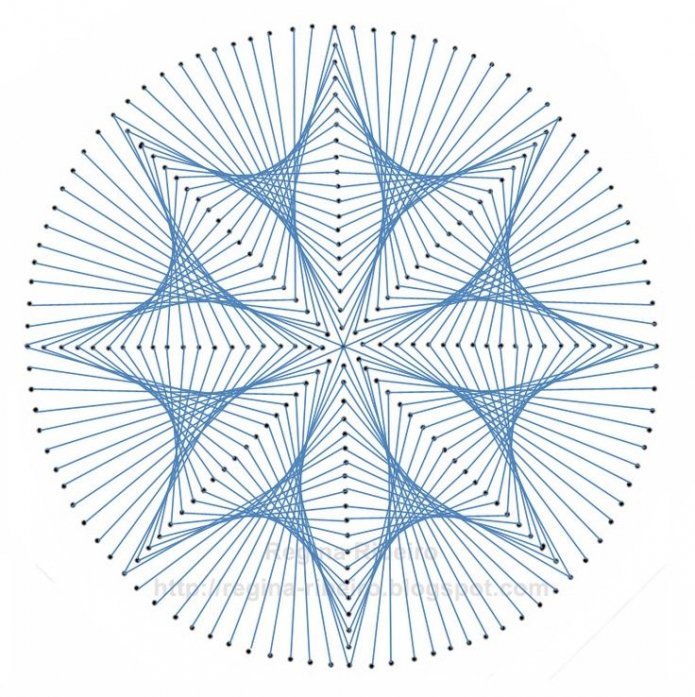
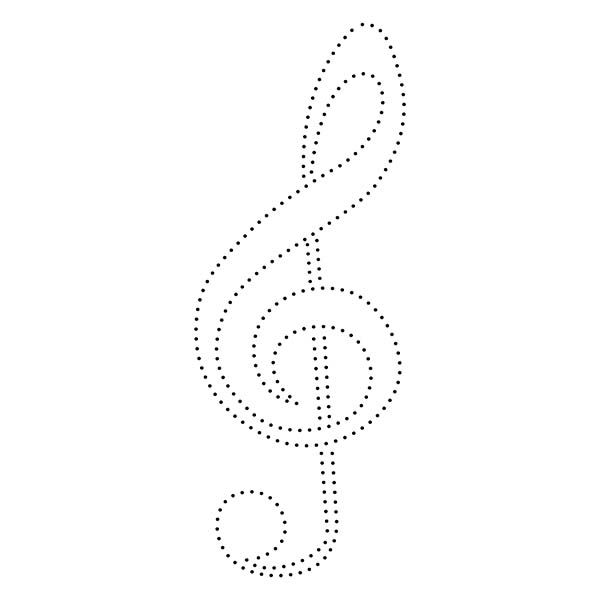
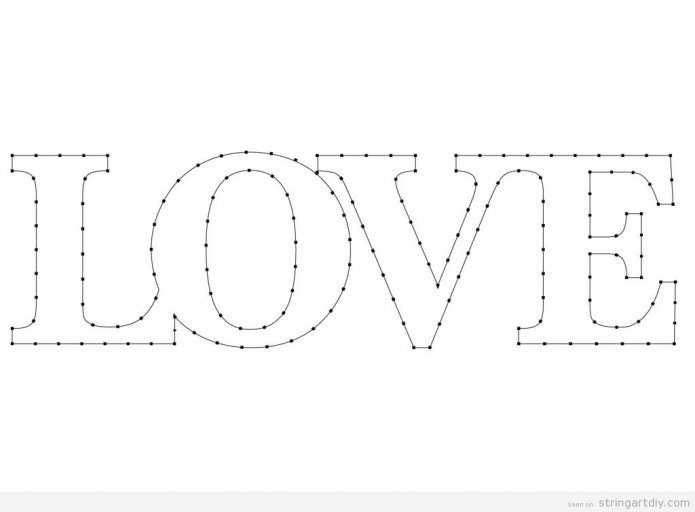

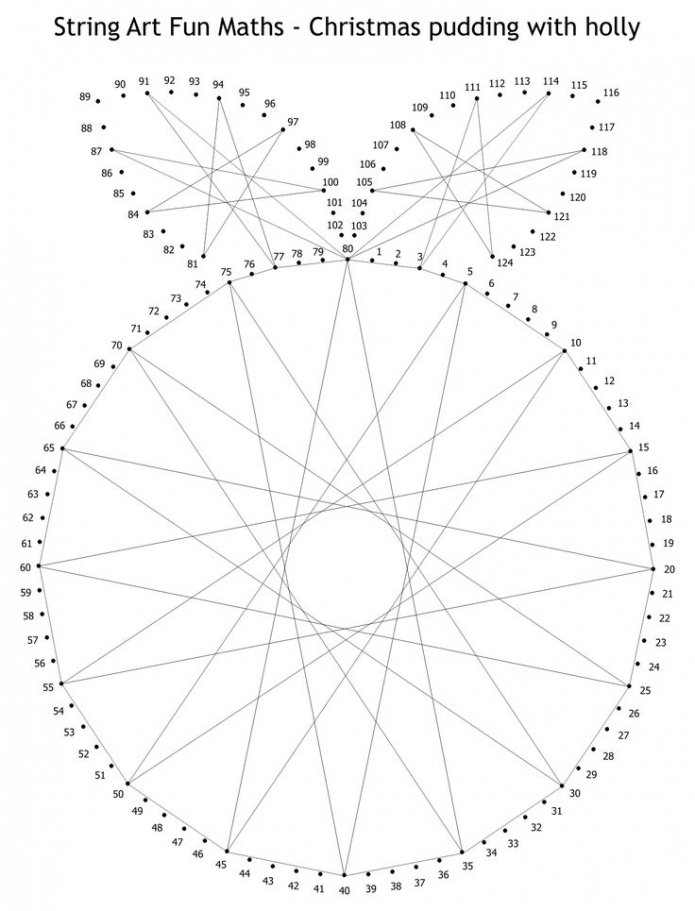
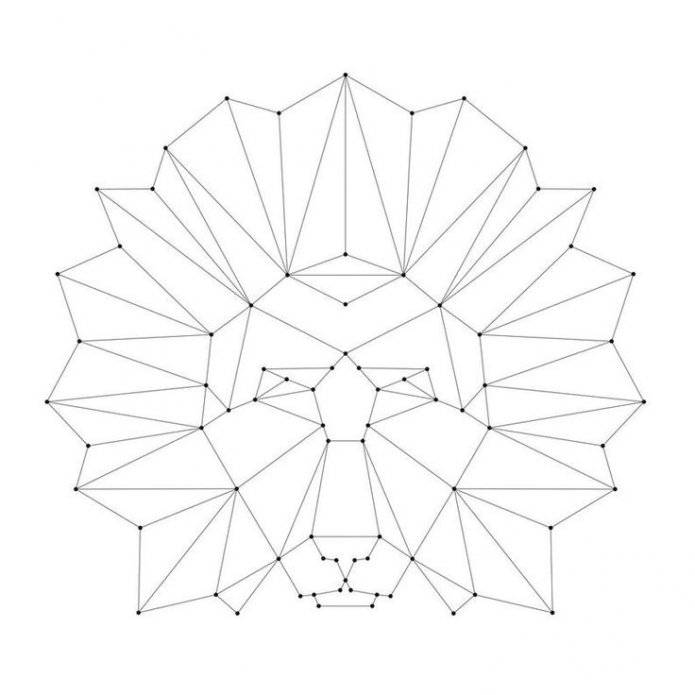
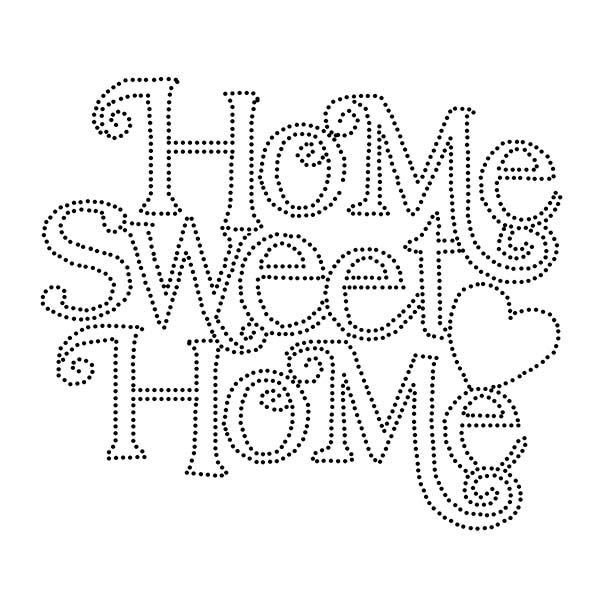
Compositions made in the string art direction have become a popular trend in handicrafts. The works of artists using this technique are widely represented at international exhibitions. It is quite easy to learn this type of art: everything depends on the attentiveness and perseverance of the novice master.
Now reading:
- Comprehensive Guide to Purchasing a Used Tesla Model X
- Wardrobe Design Ideas: 70 Photos for Inspiration and Design
- Types of stretch ceilings (69 photos): what to choose and key differences.
- Stained glass ceilings: 65 photos, creative design solutions and interior examples.
- Sofas with Ottomans: 50+ Photos for Inspiration in the Interior of the Living Room and Kitchen